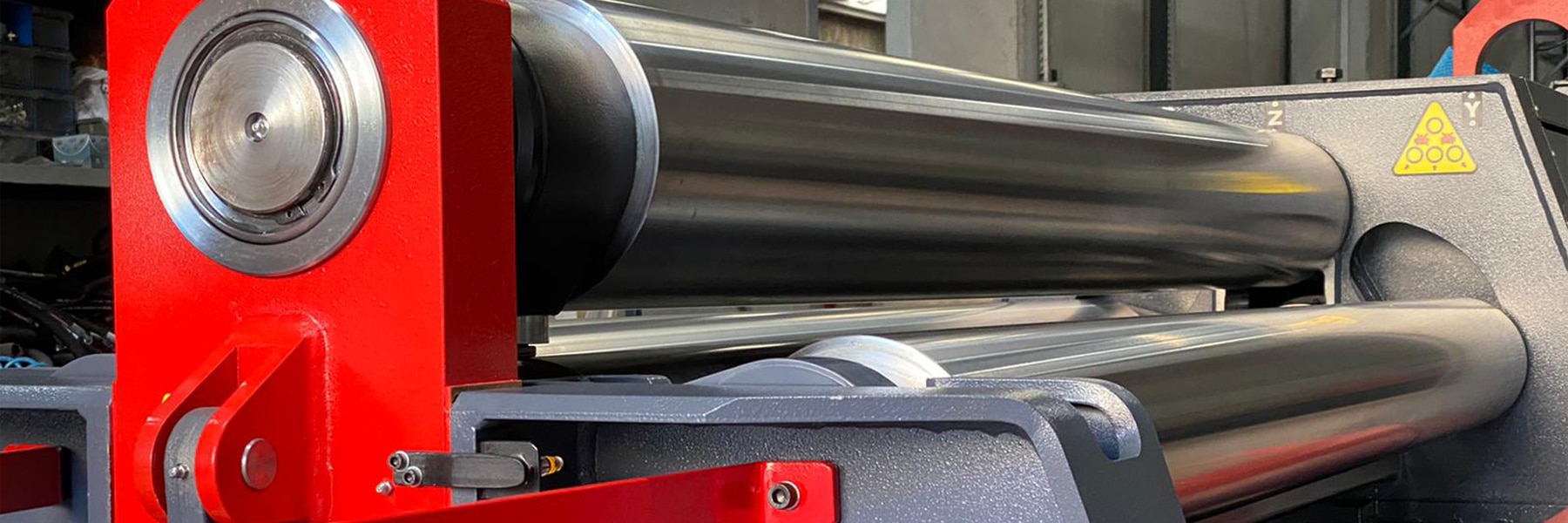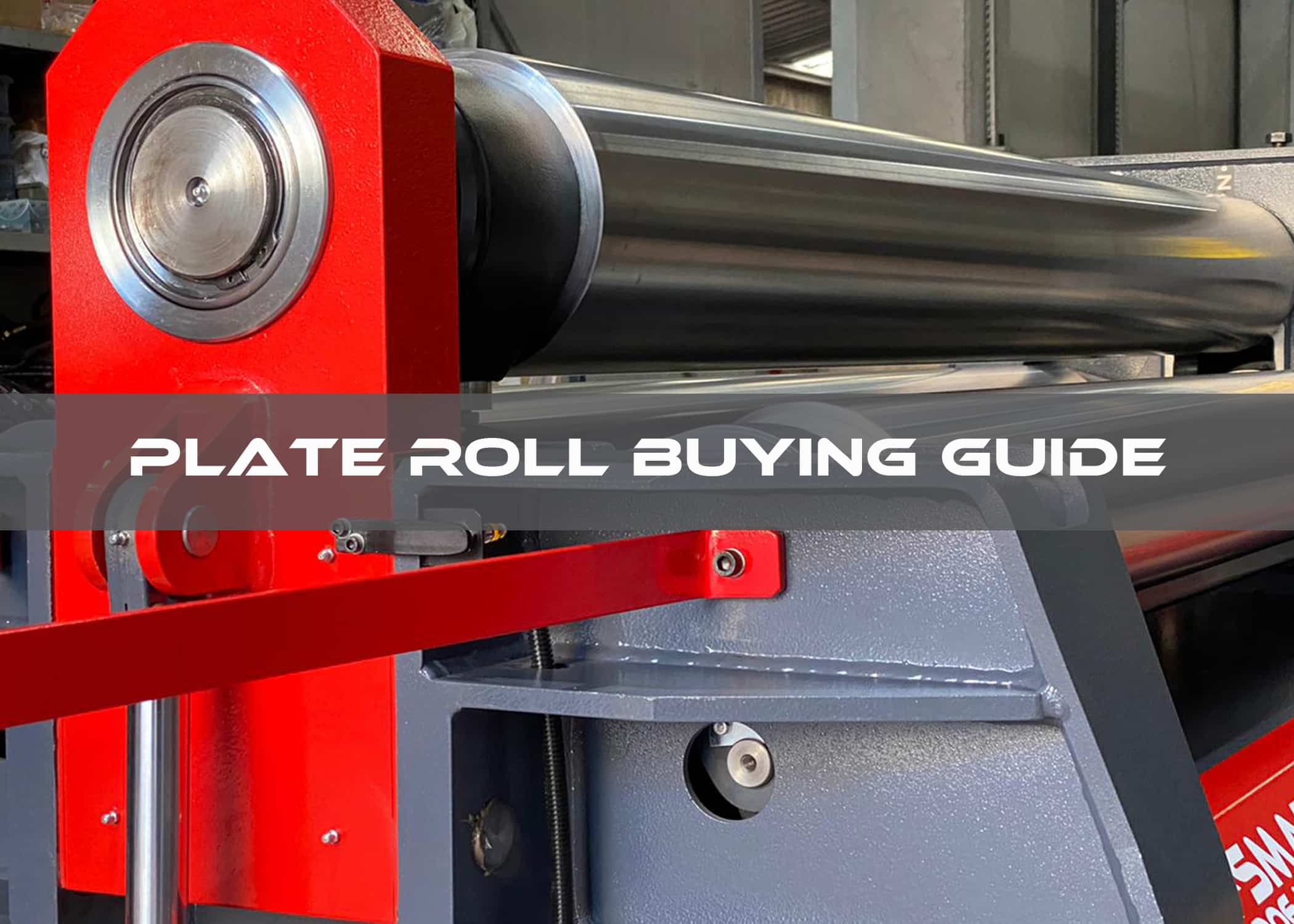When metal fabricators seek to purchase press brakes, band saws, or fiber lasers, they often want the biggest machine that they can afford to process jobs of various sizes. Buying a plate rolling machine is different, since larger machines won’t work for smaller jobs and vice versa.
Here’s a brief guide to critical aspects you should consider before buying a plate roll.
What Projects Will You Be Producing?
Look at the projects you will potentially be doing inhouse or for customers. Outline the range of material sizes you will be needing to accommodate those jobs. When looking at the sizes of your blanks, it is vital to consider the thicknesses of the material along with their lengths and widths. Recognize that you may need to outsource some jobs or acquire plate rolls of different sizes to meet your needs. (“Plate roll” is used here as an umbrella term to refer to rolling machines for everything from thick plate metal to thin gauge sheet metal.)
Every new plate roll on the market (and most used ones) will list its capacities, usually both on a specification plate mounted to the machine itself, as well as in included literature. Comparing these capacities to your expected jobs will tell you if the machine in question can handle the requirements. Please be aware that constantly running material at the upper limits of the plate roll’s capacity will put undue strain on the machine. It is always advisable to purchase a machine with a slightly higher capacity than what you will normally be needing.
Plate rolls, like press brakes, can have workpieces of sizeable lengths fed into them—provided the material can be supported during processing—but are limited as to the width of the plate. (The term “width” as used here describes the unbent dimension along the outside of the rolled cylinder, or perpendicular to the dimension being fed into the machine. This is important to note as some manufacturers will refer to this dimension as “bending length.”) The width of the workpiece is dependent on the length of the individual rolls of the machine. An 8′ plate roll will be several feet longer in its actual footprint but is so-called because its rolls will have 8′ of working surface to allow up to 8′ wide workpieces.
A plate roll will also list its thickness processing capacity but will often do so with multiple capacities based on the diameter size of the finished part. For example, a 4′ plate roll with a 6″ diameter top roll may list a bending capacity of 1/4″ but specify it for parts with a minimum internal diameter of three times the diameter of the top roll (since material is always bent around the top roll). The same machine might list a 5/16″ capacity for parts five times the diameter of the top roll—1/16″ thicker—since less force will be required to roll a larger diameter. Likewise, greater force will be required to roll a tighter cylinder, so the thickness capacity might be 3/16″ for a part only 1.5 times the diameter of the top roll. It is essential to take these variances into consideration when shopping for plate rolls.
Other project considerations include:
- Will you need to do prebending? (Prebending is the elimination of wide flat spaces at either end of the bent cylinder by rolling those regions first under higher pressure.) Prebending capacity will always be less than bending capacity, so it needs to be considered when sizing plate rolls.
- Will you need to do cone rolling on your plate roll? How about rolling special shapes, like a rectangular tank with rounded corners?
- Will you require any special material handling needs for unloading parts or supporting them while they are being rolled?
- What production volume do you foresee for your biggest jobs?
- What do you expect your potential future needs to be, such as increasing production capacity or handling larger material?
What Materials Will You Be Rolling?
Along with the dimensions and thicknesses of your workpieces, their chemical composition is also critical to consider. Different metals react differently when rolled, so you need to be aware of the distinctions between low carbon steel (usually called mild steel), stainless steel, aluminum, and anything else you might be planning on rolling. Different grades of the same metal will also roll differently from each other as their tensile strength will vary.
The more ductility a metal has, the easier it is to roll (ductility is the ability of a piece of metal or other solid to deform when placed under a load). When a lesser load is placed on a ductile material, it will experience elastic deformation, then resume its original form when the load is removed. When the load is sufficient to pass the yield point (elastic limit) of the material, then it will experience plastic deformation and not be able to return to its original configuration. The purpose of a plate roll is to impart a plastic deformation into a sheet of metal so that it permanently takes on a new curving shape.
If you are rolling metal with a greater yield strength, such as a higher carbon steel, you may need a more powerful plate roll than one that can roll the equivalent size plate made of mild steel. Depending on the material you roll, you may also need a plate roll that features crowning built into the top roll (a thicker diameter towards the center of the roll) to compensate for deflection, so the part isn’t deformed into a barrel-type shape.
What Type of Plate Roll Do You Want?
There are different configurations of plate rolls on the market, and the type you select will be based on two main factors: your budget and the type of rolling you will perform.
While they are more expensive, 4-roll plate rolls are the preferred choice of most fabricators because of their versatility. Being double pinch machines (able to clamp down on the material on either side), they are ideal for prebending operations since the metal doesn’t need to be removed and turned around to work both ends. They are easier to operate and have greater control of the material, making them more accurate than 3-roll machines.
Other configurations include simple 2-roll machines for extremely light gauge work, 3-roll initial pinch (also called asymmetrical), 3-roll double pinch, and 3-roll variable geometry machines with bottom rolls that can move horizontally. While some very simple sheet metal rolls are manually driven, most are either powered by electric motors (lighter gauge) or hydraulic systems (thicker plate).
You will also want to choose a plate roll from a reputable manufacturer with a history of producing high-quality plate rolling machines. Seek feedback from other users, reviews, and recommendations to get a sense of the machine’s performance and reliability. Look carefully at options for the machine. Most will significantly increase the final price, but some may be extremely beneficial for your operation, such as precision ground rolls to produce a polished finish on parts, hardened rolls for greater durability, or vertical supports for large diameter rolling.
Other Factors to Consider
Additional key considerations when purchasing a plate roll include:
- Confirm that you have the necessary space and infrastructure to accommodate the plate roll, including power supply and access for material handling.
- Ensure that your operators are trained to use the machine safely and efficiently.
- Look for safety features like emergency stops, guards, and interlocks to protect operators.
- Understand the maintenance needs and costs associated with the machine to ensure its longevity.
- Check for warranties and available customer support from the manufacturer or distributor.
Finding a Trustworthy Distributor
Before making a purchase, it’s a good idea to consult with a knowledgeable fabricator, engineer, or other expert in the field who can help you assess your specific needs and recommend the most suitable plate rolling machine for your application. If you have a reliable metalworking equipment dealer, they can be an indispensable asset in fitting you to the right plate roll.
As important as it is to buy a good brand of machine, it is equally as beneficial to have a distributor who values you as a customer and is invested in your ongoing success. They should carry a wide range of machine types to allow you a selection to choose from. A good machine seller should have a parts and tooling department and provide access to service technicians to help you with installation, maintenance, and repair needs.
A responsible dealer won’t rush you into a decision but help educate you so you can make an informed purchase when you and your business are ready to move forward. Buying a good plate roll is an investment in your future, and finding the right one will bring more efficiency to your operation and give you a competitive edge in your fabrication market.







